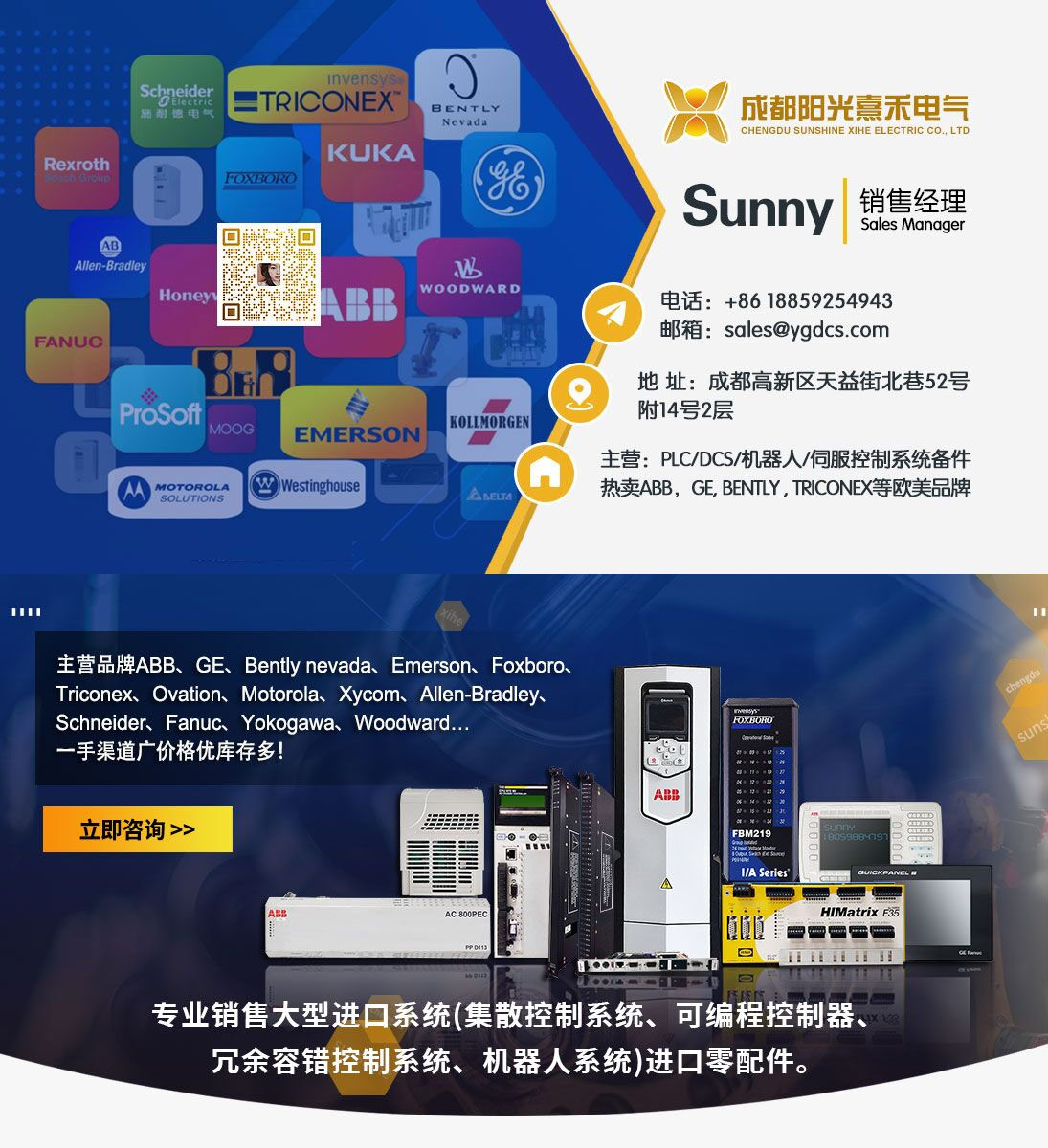Description
3401 可编程逻辑控制器PLC
可编程控制器是60年代末在美国首先出现,当时叫可编程逻辑控制器PLC(ProgrammableLogicController),目的是用来取代继电器,以执行逻辑判断、计时、计数等顺序控制功能。PLC的基本设计思想是把计算机功能完善、灵活、通用等优点和继电器控制系统的简单易懂、操作方便、价格便宜等优点结合起来,控制器的硬件是标准的、通用的。根据实际应用对象,将控制内容编成软件写入控制器的用户程序存储器内。控制器和被控对象连接方便。
随着半导体技术,尤其是微处理器和微型计算机技术的发展,到70年代中期以后,PLC已广泛地使用微处理器作为中央处理器,输入输出模块和外围电路也都采用了中、大规模甚至超大规模的集成电路,这时的PLC已不再是逻辑判断功能,还同时具有数据处理、PID调节和数据通信功能。
可编程控制器是一种数字运算操作的电子系统,专为在工业环境下应用而设计。它采用了可编程序的存储器,用来在其内部存储执行逻辑运算,顺序控制、定时、计算和算术运算等操作的指令,并通过数字式和模拟式的输入输出,控制各种类型的机械或生产过程。PLC是微机技术与传统的继电接触控制技术相结合的产物,它克服了继电接触控制系统中机械触点的接线复杂、可靠性低、功耗高、通用性和灵活性差的缺点,充分利用微处理器的优点。
可编程控制器对用户来说,是一种无触点设备,改变程序即可改变生产工艺,因此可在初步设计阶段选用可编程控制器,在实施阶段再确定工艺过程。另一方面,从制造生产可编程控制器的厂商角度看,在制造阶段不需要根据用户的订货要求专门设计控制器,适合批量生产。由于这些特点,可编程控制器问世以后很快受到工业控制界的欢迎,并得到迅速的发展。目前,可编程控制器已成为工厂自动化的强有力工具,得到了广泛的应用。

3401 可编程逻辑控制器PLC
Programmable controller is 60 s first appeared in the United States, was called a programmable logic controller PLC (ProgrammableLogicController), the purpose is to replace relay, to perform logic, timing, counting and other sequence control function. The basic design idea of PLC is to combine the advantages of computer function perfect, flexible and universal and the advantages of relay control system simple and easy to understand, easy to operate and cheap, and the hardware of the controller is standard and universal. According to the actual application object, the control content is compiled into software and written into the user program memory of the controller. Easy connection between controller and controlled object.
With the development of semiconductor technology, especially microprocessor and microcomputer technology, after the mid-1970s, PLC has been widely used as a central processor, input and output modules and peripheral circuits are also used in the medium, large-scale or even very large scale integrated circuits, then the PLC is no longer a logical judgment function. It also has the functions of data processing, PID regulation and data communication.
A programmable controller (PLC) is a digital arithmetic operated electronic system designed for use in industrial environments. It uses a programmable memory to store instructions for performing operations such as logical operations, sequence control, timing, calculation and arithmetic operations, and to control various types of machinery or production processes through digital and analog inputs and outputs. PLC is a combination of microcomputer technology and traditional relay contact control technology, it overcomes the shortcomings of complex connection, low reliability, high power consumption, versatility and flexibility of the mechanical contact in the relay contact control system, and makes full use of the advantages of the microprocessor.
For the user, the programmable controller is a contactless device, and the production process can be changed by changing the program, so the programmable controller can be selected in the preliminary design stage and the process can be determined in the implementation stage. On the other hand, from the point of view of the manufacturer of programmable controller, it is not necessary to design the controller according to the user’s order requirements in the manufacturing stage, which is suitable for mass production. Because of these characteristics, the programmable controller was soon welcomed by the industrial control community after its advent, and has been rapidly developed. At present, programmable controller has become a powerful tool for factory automation and has been widely used.
With the development of semiconductor technology, especially microprocessor and microcomputer technology, after the mid-1970s, PLC has been widely used as a central processor, input and output modules and peripheral circuits are also used in the medium, large-scale or even very large scale integrated circuits, then the PLC is no longer a logical judgment function. It also has the functions of data processing, PID regulation and data communication.
A programmable controller (PLC) is a digital arithmetic operated electronic system designed for use in industrial environments. It uses a programmable memory to store instructions for performing operations such as logical operations, sequence control, timing, calculation and arithmetic operations, and to control various types of machinery or production processes through digital and analog inputs and outputs. PLC is a combination of microcomputer technology and traditional relay contact control technology, it overcomes the shortcomings of complex connection, low reliability, high power consumption, versatility and flexibility of the mechanical contact in the relay contact control system, and makes full use of the advantages of the microprocessor.
For the user, the programmable controller is a contactless device, and the production process can be changed by changing the program, so the programmable controller can be selected in the preliminary design stage and the process can be determined in the implementation stage. On the other hand, from the point of view of the manufacturer of programmable controller, it is not necessary to design the controller according to the user’s order requirements in the manufacturing stage, which is suitable for mass production. Because of these characteristics, the programmable controller was soon welcomed by the industrial control community after its advent, and has been rapidly developed. At present, programmable controller has become a powerful tool for factory automation and has been widely used.

购买咨询热线/Phone:18859254943
邮箱/Email:sales@ygdcs.com
地址:成都高新区天益街北巷52号附14号2层





 购买咨询热线/Phone:
购买咨询热线/Phone: 邮箱/Email:
邮箱/Email: 地址:
地址:


